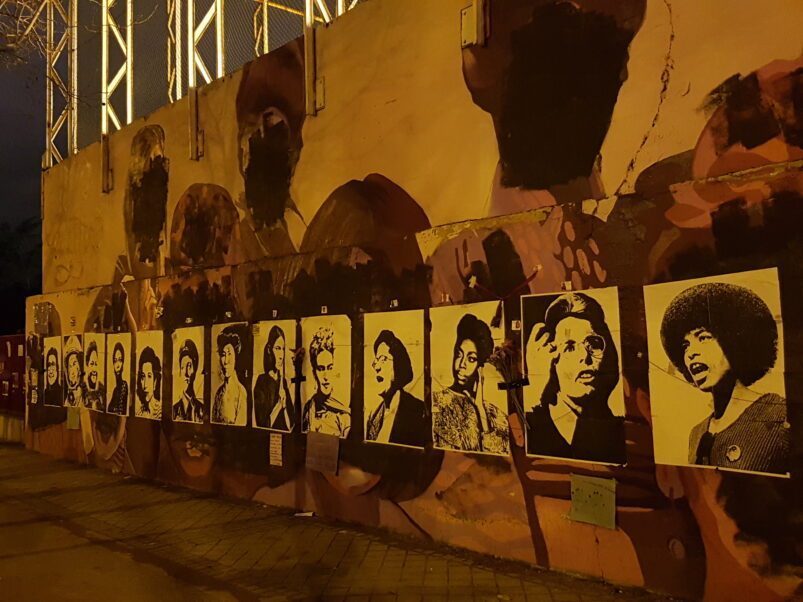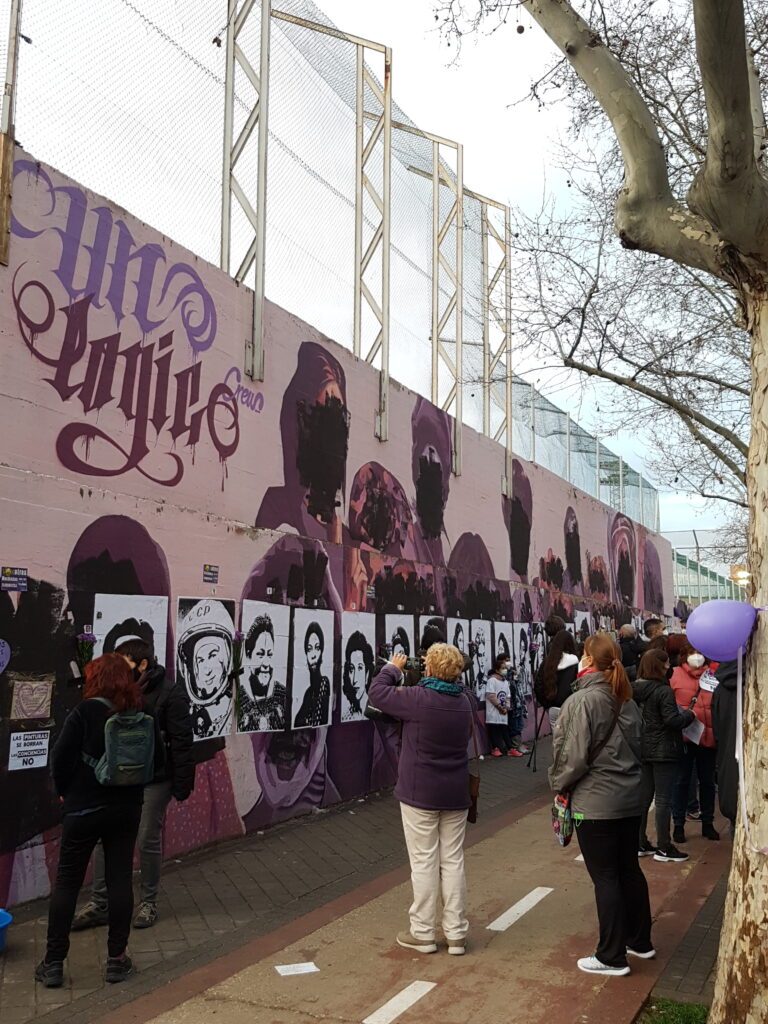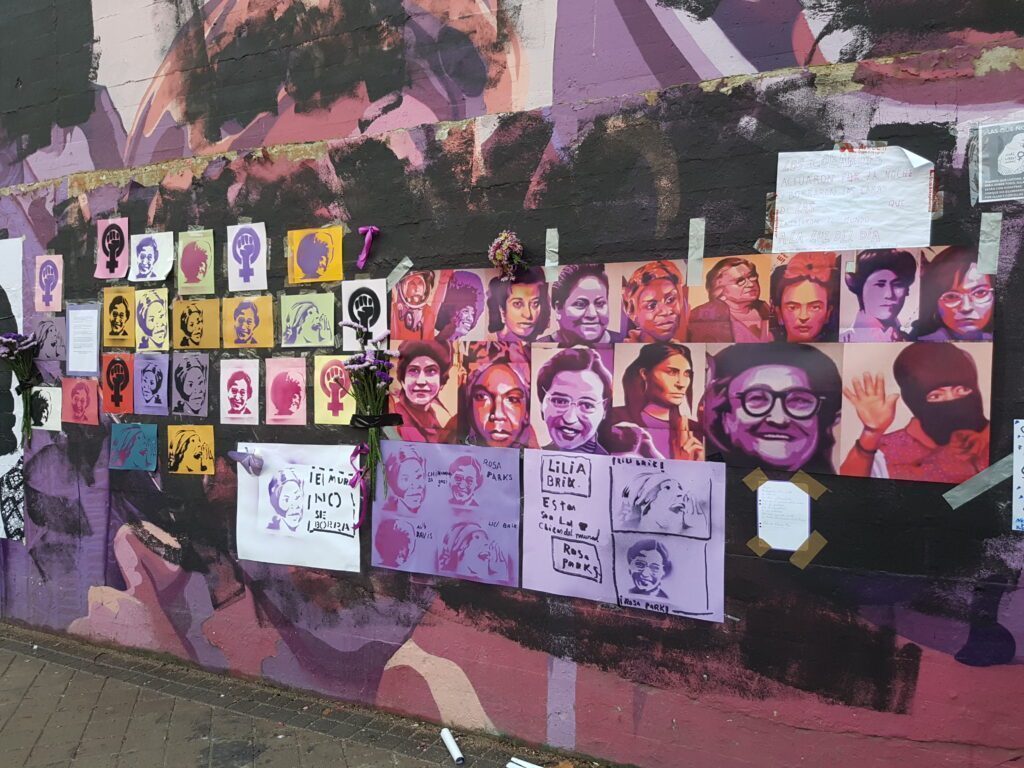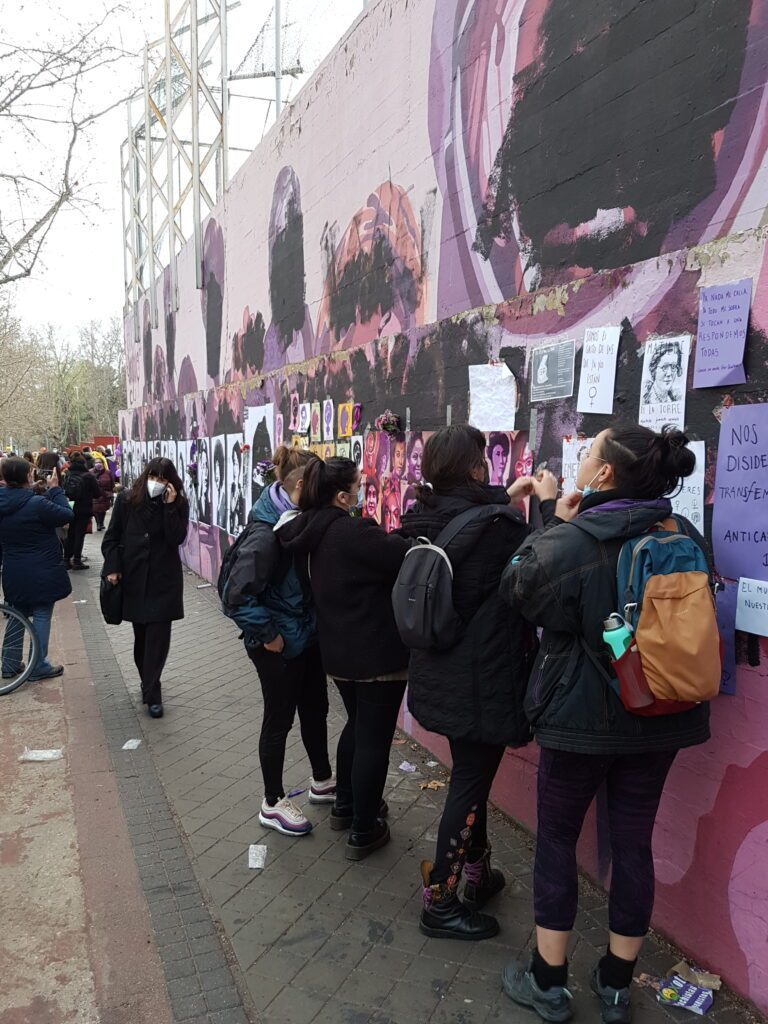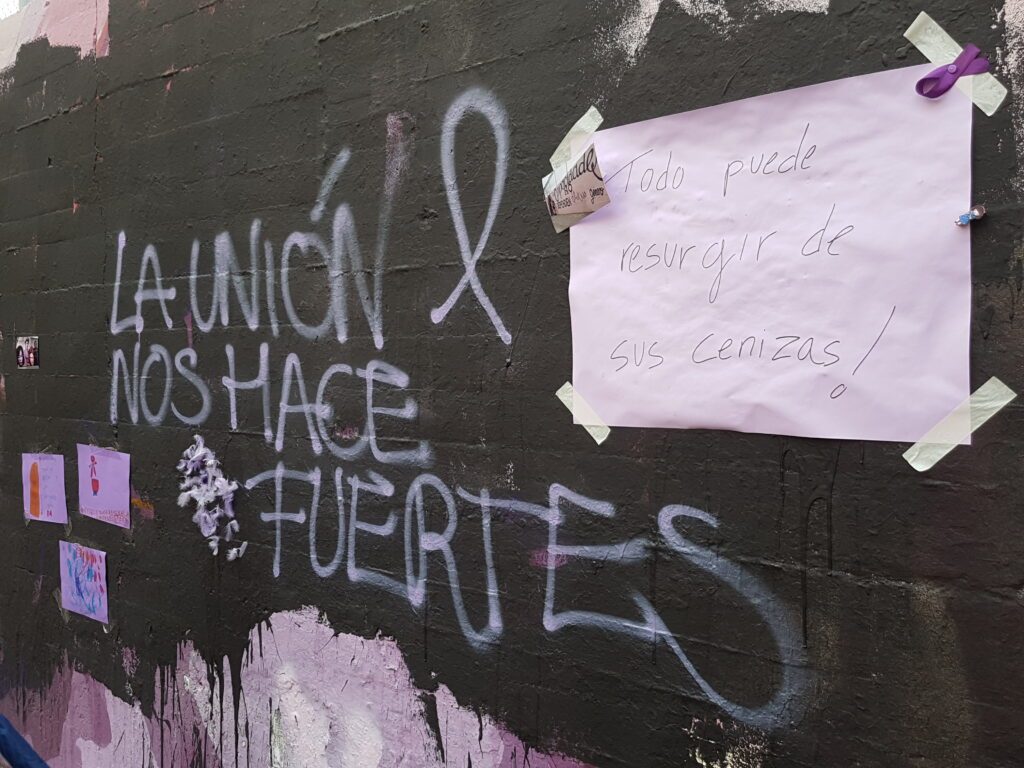On 8 March, Women’s Day, the urban artwork in the “Barrio de la Concepción”, in the district of “Ciudad Lineal” in Madrid, was completely painted in black. The main reason for such an action on the part of those responsible? The fact that the faces of 15 prominent women throughout the 20th century were depicted in the painting.
Written by: European Heritage Youth Ambassador Héctor Manuel Aliaga De Miguel
However, the origins of this dispute had already been going on for several months, since January of this year, when a clash of opinions arose over whether to erase, modify or maintain the mural painting because of its “inappropriate meaning” for the place it was intended for: the façade of a public sports centre. As a result, neighbours, residents, inhabitants, politicians and representatives have expressed their sense of identity with this recent but significant urban work that arose from a collaborative neighbourhood idea in 2018, in a debate that is still unresolved today.
It is important to point out that, within the social movements and political confrontations that this type of artistic and cultural representations may entail, the main aim of this text focuses on the heritage characteristics of the work and the values associated with it. To this end, we will divide its journey into three chronological phases.
Origins based on a collaborative project
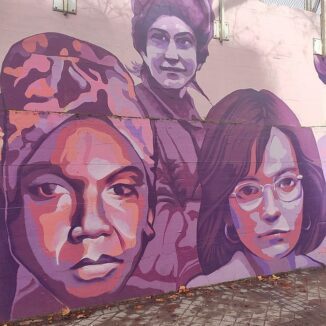
The beginnings of this urban work in one of the neighbourhoods of the District of Ciudad Lineal in Madrid have their origin almost three years ago. In 2018 a group of artists promoted the realization of a mural painting in a collaborative way, in one of the walls of the La Concepción Sports Centre. Thanks to them and the “Compartiendo Muros” project, a creative and joint solution was found to a large blank canvas of a public building in the area.
In addition, the participation of the neighbours through the strategies of “Decide Madrid” helped to emphasise some of the values, such as citizen participation, neighbourhood collaboration, neighbourhood identity or the refurbishment of the collective space.
Thanks to this process, after a joint work carried out by volunteers, a large mural painting was achieved in which several of the universal characteristics of a work of urban art such as aesthetic and artistic value, social and neighbourhood identity, the ability to transform society, the landmark of reference within a city, etc. are collected.
The criteria for including these women in their work were their personal achievements, leaving aside any political overtones.
In addition, the work has a message of great weight in the 21st century, which is to give visibility to the role of women throughout history and thus achieve recognised equality between women and men. And more specifically, to give visibility to the faces of fifteen outstanding women of the 20th century, including the painter Frida Kalho, the singer Nina Simone, the activist Rosa Parks and the astronaut Valentina Tereshkova.
As one of the creators of the mural’s design, a member of the Unlogic collective, justified: “the criteria for including these women in their work were their personal achievements, leaving aside any political overtones.” However, it is precisely this last nuance of feminist support that, despite everything else mentioned, has sparked a socio-political debate and confrontation, focusing the joint importance of an urban intervention on mere questions of governmental interest.
First conflicting opinions: Appropriation or removal?
After the mural had been in existence for more than two years, becoming a landmark among many of the residents of the neighbourhood of La Concepción in Ciudad Lineal and other neighbourhoods in the city of Madrid, in January 2021 a debate was publicly expressed between two different sides of the government of the capital city council.
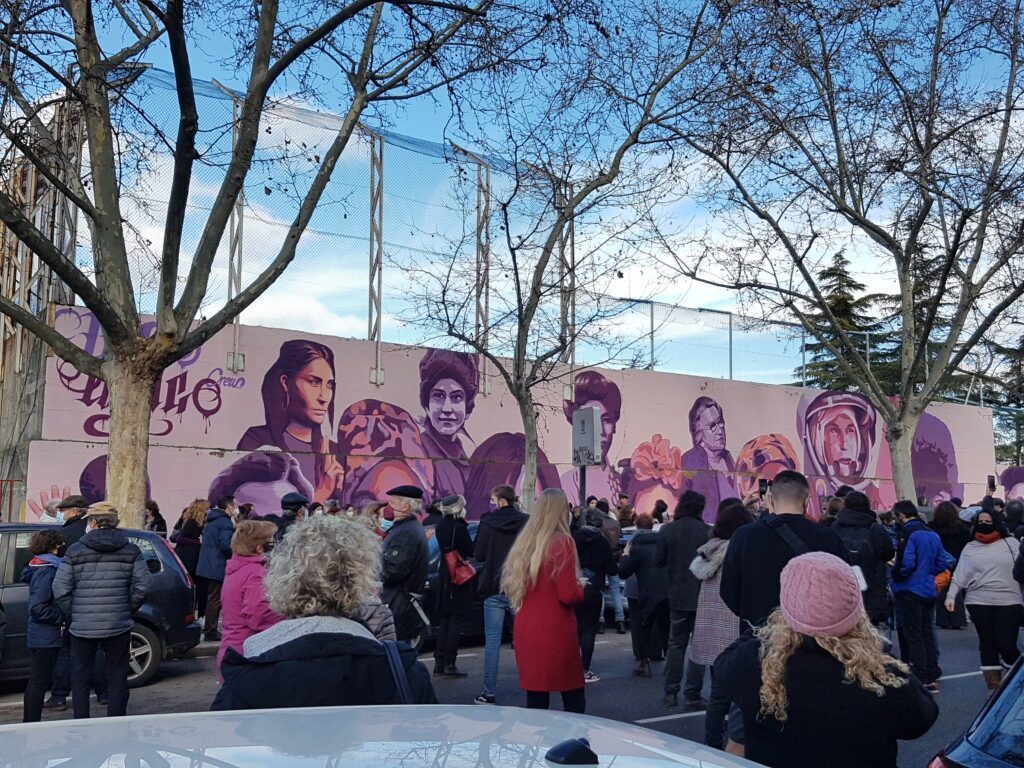
We do not intend to detail in order to focus the importance of the mural painting on its heritage and cultural value. In general terms, it was argued that the feminist theme of the work did not correspond to the use of the public space chosen, a sports centre. Therefore, the aim was to change this intervention with one more in keeping with this urban space, which would highlight the values of sport, and thus avoid extolling the role of some of the women represented as having an “inappropriate”, “sectarian” or “anarchic” propagandist character.
However, by that time after two years of visibility, the work of art already had the support of local residents. As proof of this in response to the political debate generated, many of the inhabitants of several of the district’s neighbourhoods and of Madrid, took to the streets to defend the mural painting under banners and slogans such as: #undistritoquesuma, #ElMuralSeQueda, #noborreselmural, #ElMuralNoSeToca. Thanks to this and for a while, understanding how the capacity of urban Cultural Heritage can generate a sense of identity, collaboration and transformation, the painting managed to stay without a wider conflict.
Vandalisation actions VS Protection reactions
However, the truce for the tensions generated did not last for long. Coinciding with the celebration of Women’s Day, a small group of people of unknown identity attacked and vandalised the artwork on the night between 7 and 8 March.
Even the rollers and buckets used for this action were left in the middle of the street for all the neighbours to see
Aided and sheltered in the strange nocturnal tranquillity that currently envelops the city of Madrid, due to the curfew restrictions from 23:00 as a preventive measure for the Covid-19 pandemic, the mural exhibition dawned early in the morning covered in black paint. Leaving the faces of each of the 15 women represented and protected with so much impetus. Even the rollers and buckets used for this action were left in the middle of the street for all the neighbours to see.
In a few minutes and hours, the news went viral for the whole neighbourhood, for the whole city, even for the whole region. Furthermore, in a city near to the capital located 30 km away, Alcalá de Henares, another similar urban work was also attacked. However, it seems that the citizen, in the face of such adversity, manages to join forces again and bring out a better version of himself to grow higher, relying on the value of identity and unity that he finds in this case in the values of the mural.
Thus, in the early afternoon of 8 March, it was possible to see again this urban work reconstituted by the same anonymous volunteers who brought it to life for the first time almost three years ago. In this case, the coloured paper, the banners, the flowers and the new drawings, phrases and handmade slogans reconstituted the painting in a less technical and more personal way, but with the same social and artistic message.
Future reconstitution and protection
It seems that, in spite of all this, when a cultural element becomes identifiable in one way or another for the inhabitants of a place, it is already very difficult to erase it from the collective memory. Fortunately, and leaving aside any political issues or interests that may be associated with it, the current mayor of the capital has recognised the importance of condemning any kind of vandalism, thus ensuring the restoration of the mural to its original design.
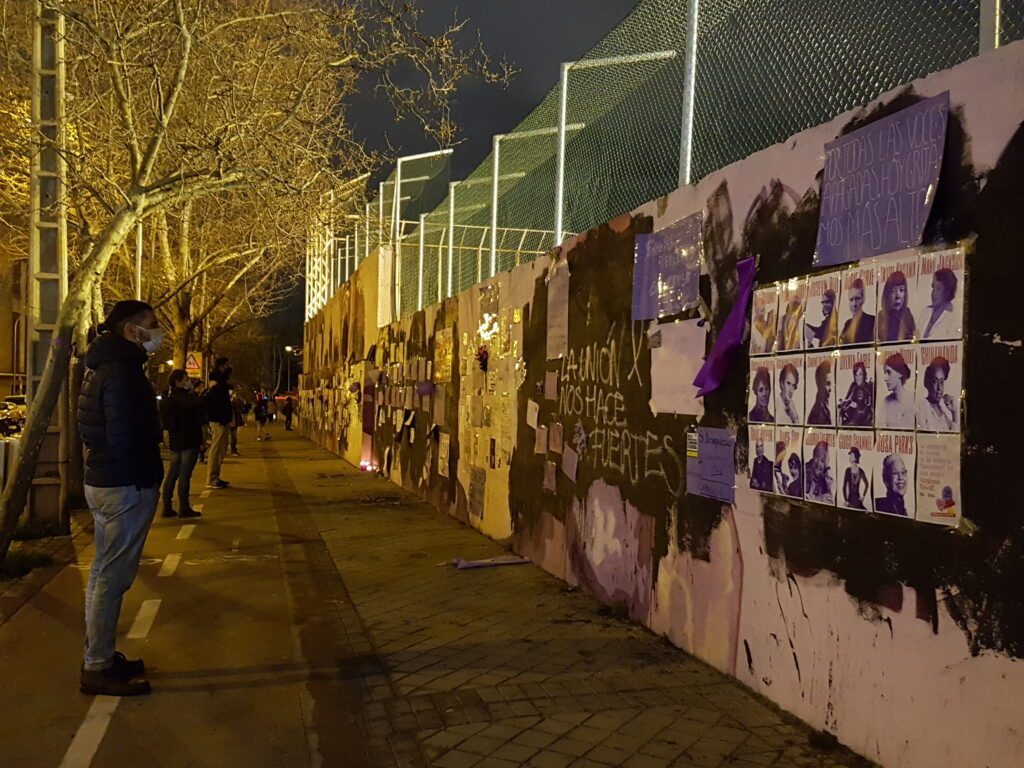
In other words, a first restoration for such a young work, but one that in a short time has gained so much weight in the district of Ciudad Lineal and in the whole city of Madrid.
About the author

A PhD Candidate in Urbanism Resilience and Cultural Heritage (UPM, Spain), Manuel is passionate about Architecture and Cultural Heritage. Having lived in places such as Cambridge, Paris or São Paulo- languages, personal knowledge and contacts have been essential tools in his daily life for H2020 research projects, PhD activities and International Committees collaborations. He is currently a European Heritage Youth Ambassador.
Source: 20minutos (Spanish), El País (Spanish), Público (25-01-2021, Spanish), Público (08-03-2021, Spanish) and Wikipedia
Read more about cultural heritage, or check out one of the tags below:

